
While I spend most of my time scanning for change taking place in society writ large, rather than trends in museum practice per se, I do keep an eye open for new museums. Why and how do museums arise (especially in these financially troubled times)? What are the motivations of the founders, and funders, of these institutions? How do they see “museumness” as a way to advance their goals? In the past I’ve reached out to Liz Williams of the Southern Food and Beverage Museum and Peter Kim of the Museum of Food and Drink. In an upcoming post we will hear from Joanna Ebenstein, Creative Director of the Morbid Anatomy Museum. Today’s interview is with Miranda Massie, founder of the Climate Museum being created in New York City. You can follow them on Twitter @ClimateMuseum.
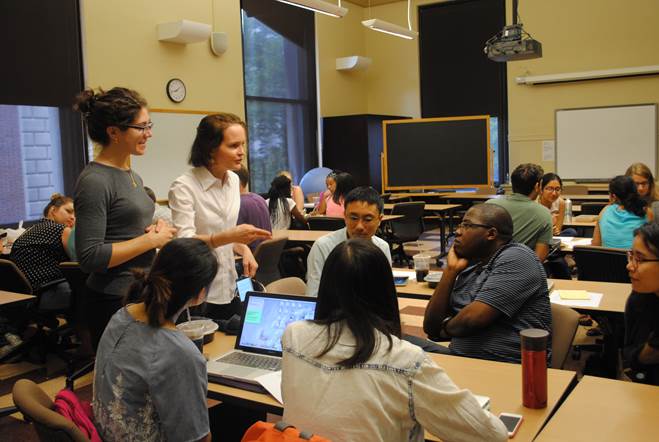 |
|
Miranda Massie, Founder of the Climate Museum, guest lectures at Columbia University’s M.A. Program, ‘Climate and Society’Photo credit: Zina Precht-Rodriguez
|
Give me the “elevator speech” for the Climate Museum—what do you tell people when you want to explain really quickly, what it will be and why they should care?
The Climate Museum will be a hub for climate science, art, and dialogue in tourist-accessible New York City. Its aim is to put climate at the center of our shared public life, catalyzing broad climate engagement.
Why a museum? People are tackling climate change education in a lot of different ways. What do you see as the advantages of pursuing advocacy and awareness in this traditional bricks-and-mortar format?
There is an outstanding array of efforts already in progress. To name just few examples, 350.org, NRDC, and the George Mason and Yale Climate Communications Centers are doing essential advocacy work that has transformed the conversation. There are robust networks devoted to formal and informal climate education that are similarly critical. We’ve recently started talking with Frank Niepold of NOAA about connecting with these networks and are thrilled about that.
However, to support the growth of a broader climate public, we need a venue—a place where people can be together, learn together and from each other, share experience. When things really matter, we come together in person. Climate really matters and we should have a collective space to do the work of educating people on this topic.
As a side note, my sense is that the social dynamics of face-to-face interactions are why museums continue to be so popular and culturally powerful even as they transform.
Finally, a solutions-showcasing Climate Museum is exceptionally well-suited to break down the barriers we’ve seen to the creation of a climate-engaged public. Research shows us that most people in this country view climate change as an issue, but few prioritize finding solutions for this challenge. Museums help to simplify complexity, and having a museum devoted to this topic could help to make climate science and data palpable, clear, and personal. We want to inspire people to focus on climate success stories large and small, so that visitors leave knowing that what they think, feel, say, and do on climate matters.
We’ll have the benefit of all that on top of the traditional museum virtues of conferring legitimacy and serving as a trusted source of information.
Your organization’s profile on Idealist.org states “The Climate Museum will join a successful group of forward looking, problem solving, citizen museums.” What are some of these “citizen museums” you see as your peers? Is there anything particular about these benchmark organizations you plan to emulate?
We’re not yet the peer of any of the institutions I’m going to mention, but we aspire to be. Some of the great museums that seem to us to aim to build civic engagement include the Holocaust Museum, the Newseum, the 9/11 Museum, the Center for Civil and Human Rights. And the Science Museum of Minnesota, with, for example, its exhibit on race and its upcoming exhibit on cities, seems to us to clearly propose something outside of any simple repository-of-knowledge model.
Even established museums find it challenging to sustain their operations in the new economy. What are you finding are the greatest challenges in starting a new museum?
We’re at such a different stage in our life cycle. That said, I suppose both zygotes and adult organisms need similar things to thrive: favorable contexts, good nutrients, symbiotic relationships.
Our biggest challenge, given that we’re in such a growth stage, is responding to the opportunities rapidly expanding around us in an effective way without irretrievably exhausting our currently minimal staff. A given day can include meetings with exhibit design teams as we familiarize ourselves with that milieu, fine-tuning the formatting of a newsletter, soaking up a mentoring call with one of our incredible advisors, selecting insurance carriers, herding cats to schedule a Trustees’ meeting, taking out the recycling, and deciding between two very similar Pantone yellows. The good news is that we’re meeting with such good will, feel so committed to the mission, and are encountering these challenges so freshly, that they are, in the main, highly enjoyable.
We’re going to be launching seed fundraising in the fall. I’m sure there will be challenges as well as great excitement associated with that.
As a member of your own board observed, climate change can be “a very depressing subject.” Is one of your goals to attract an audience that includes people who are not already passionate about this cause, and if so, how will you go about that?
That’s our single central goal. We have to be clear about urgency while emphasizing success stories and solutions—that will be our great content challenge—and we have to make the experience inspiring, beautiful, connected, impressive, and cool. I am deeply confident that with the right team this can be accomplished.
What are some of the ways you plan to make the museum resilient in the face of projections for rising sea levels and increased storm frequency in NYC?
We’re a long way away from creating our permanent facility and that will indeed be a great design challenge—especially given the resonance of potentially securing a location near the water for the very reasons you mention. In short, we don’t yet have any resiliency plans, but the question will be absolutely key.
Starting a new museum is a daunting undertaking. Who have you turned to for advice and assistance as you plan the Climate Museum?
We’ve moved forward in what often feels like a magical surround of good will and support. There are countless people outside of the museum profession who have been tremendous, but given the museum-centered community we’re connecting with through your blog—an opportunity we much appreciate, by the way!—I’ll focus on people likely known among your main readership.
The first person who must be highlighted has been enmeshed in every positive aspect of our development: Lou Casagrande. Lou, as many readers will know, ran the Boston Children’s Museum for a number of years and served as AAM’s Board Chair. We were exceptionally lucky to be introduced to Lou more than a year ago, at the very beginning of our launch. I’ve spoken with him more often than with anyone. Lou’s a hard person to describe credibly. He’s intellectually brilliant and a visionary. He’s savvy and wise about the business side. He’s intuitive, warm, and kind as a mentor. And with each of these gifts he is on the edge of the spectrum.
There’s one big decision I made without conferring with Lou—and I had to retract it. He’s at the heart of this enterprise.
Our extraordinary Tax and Governance counsel John Sare of Patterson Belknap, known to many readers I am sure, has also been a key intellectual partner in framing the strategy for the Climate Museum. We have spoken countless times, well beyond the constraints of tax and governance law. John is a nuanced, outstanding strategist.
More generally, we’ve reached out to the museum leaderships in New York City, and are starting to expand geographically. We have been moved and struck by how open-hearted this talented community is. A few examples of people who have extended themselves to provide great advice: in the science museum world in New York, David Harvey, Lauri Halderman, and Michael Meister in the exhibitions program at the American Museum of Natural History have been repeatedly supportive and helpful. We’re setting up meetings with the staff of the New York Hall of Science, who’ve also been very welcoming. At the Science Museum of Minnesota, which as readers will know is a major content producer and sharer, we’ve had great conversations with Paul Martin and Pat Hamilton. And in terms of recently founded New York City museums, science or not (a category that seems to us pertinent given the specific challenges of launching in any given city), we’ve gotten great advice from Glen Whitney and Cindy Lawrence at the Museum of Mathematics, Patrick Sears at the Rubin, and Amy Weisser, at the 9/11 Museum and Memorial. Generally, we’ve found this to be a highly congenial and generous community. I love the civil rights litigators I professionally grew up with, but museum professionals are non-provincially committed to the vibrancy of the sector as a whole in a way that has seemed to us to be remarkably robust and universal.

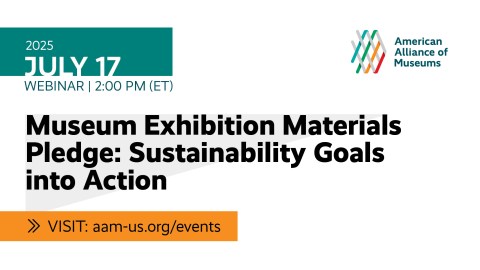

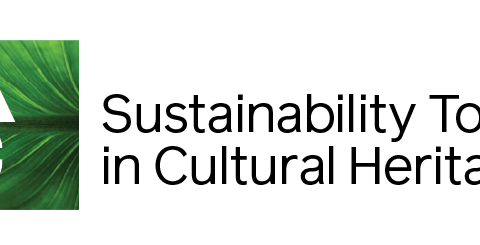

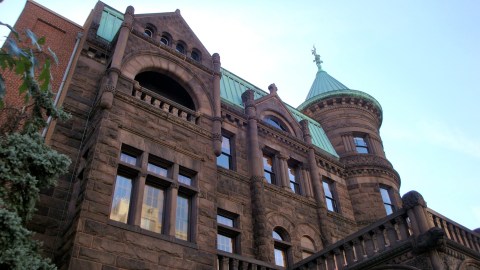


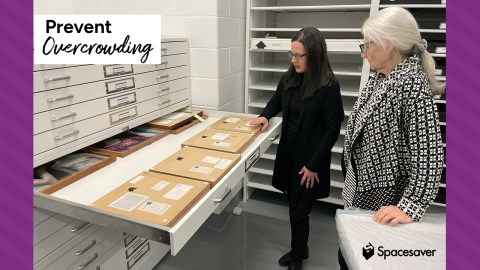
I am delighted that she has found the museum world so welcoming and supportive. It seems she is making smart connections and using them well to build the museum-side of her work.
And I can't say enough about the mission. Changing behavior at scale is what's required to address a changed climate and climate response. There is much work to be done to reach enough people and help them make significant change happen.
Onward!
[Posted on behalf of Miranda Massie]:
Hi Sarah, thanks very much for your thoughtful and kind comment! I've heard about your leadership work on green museums and would love to connect. I can be reached at mmassie@climatemuseum.org if this is of interest! All best.